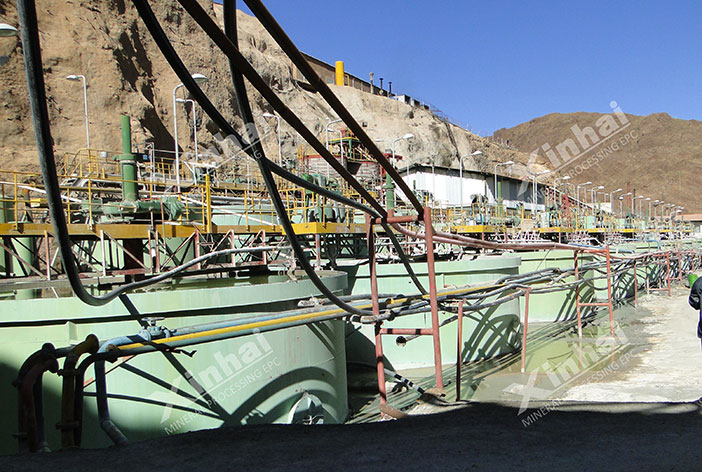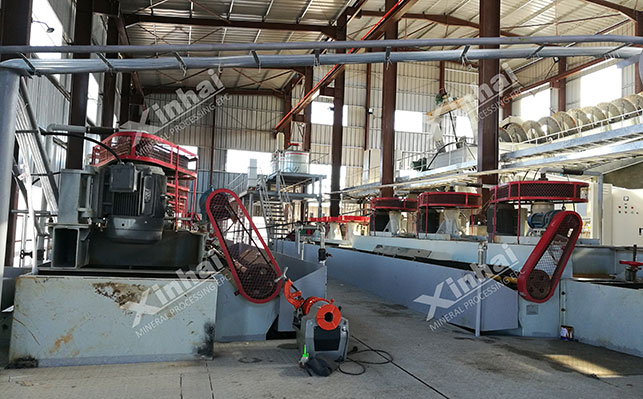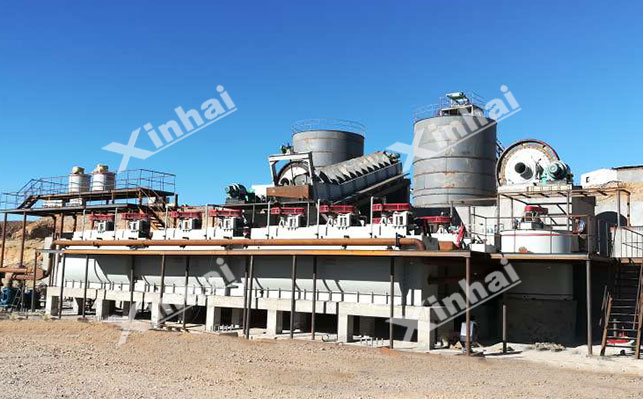
Common silver ore types include independent silver ore, in which silver is the main mineral and often coexists with quartz, calcite and other gangue; associated silver ore, silver is associated with metal minerals such as copper, lead and zinc, with low content and uneven distribution; complex silver ore, silver coexists with a variety of metal minerals, with complex composition, diverse mineral composition, complex crystal structure and a wide range of silver mineral distribution.
Silver flotation method, silver gravity separation method, silver oxidation method, silver combined mineral processing method

15311826613
Click to add WeChatSilver flotation has a wide range of applications. This method can be used for most silver. The principle is to use the difference in surface physical and chemical properties between silver minerals and gangue minerals. By adding suitable reagents, the hydrophobicity of the silver surface is changed, so that it floats with bubbling to form a stable foam layer, thereby achieving separation from the gangue minerals. Commonly used methods include single flotation method, gravity-flotation combined method, and flotation-oxidation method.

Single flotation: suitable for all kinds of silver ore beneficiation. It mainly uses the floatability of the silver ore itself. With the use of reagents, the separation of silver and gangue minerals can be achieved. When flotating associated silver ores, the main metal recovery must be taken into account. Priority flotation or mixed flotation is often used.
Gravity-flotation combined method: suitable for processing semi-raw silver ores and mineral separation of silver-embedded uneven particle size. Usually, before separation, the coarse silver needs to be precipitated and enriched by gravity separation, and then the coarse concentrate is flotated and enriched.
Flotation-oxidation method: suitable for processing difficult-to-separate silver ores, such as independent silver ores and associated silver ores that are wrapped in sulfides or closely associated with gangue, with high separation efficiency. Usually, most of the silver minerals are first recovered by flotation to obtain silver coarse concentrate or mixed concentrate; then they are oxidized to destroy the encapsulation relationship between silver minerals and other minerals, and then silver is recovered by leaching, which can significantly improve the silver recovery rate.
Gravity separation is to use the density difference between silver and other gangue minerals for separation. It is mainly suitable for recovering coarse silver minerals and is often used in combination with flotation. Common methods include shaking table gravity separation, chute gravity separation and centrifugal gravity separation.

Shaking table gravity separation method: The bed surface has threads. When the motor starts, the bed surface moves back and forth, and the bed surface is inclined. During the process, the slurry flows from the upstream of the bed surface. Under the combined effect of the lateral water flow and the vibration of the bed surface, the high-density minerals will settle quickly and gradually move to the concentrate end on the bed surface; the gangue minerals settle slowly and move to the tailings end, thereby achieving the separation of silver minerals and gangue minerals.
Chute gravity separation method: It uses the centrifugal force and gravity difference of the minerals in the spiral trough for sorting. After the silver ore slurry enters the spiral trough, under the action of centrifugal force, the high-density silver mineral particles approach the bottom of the trough and move downward along the spiral line, while the low-density gangue mineral particles approach the trough wall and move upward along the spiral line, thereby achieving separation. It is suitable for processing silver ores with a particle size of 0.02-2mm.
Centrifugal gravity separation method: It uses high-speed rotation to generate a strong centrifugal force field and strengthen the gravity sedimentation of minerals to achieve separation. In the high-speed rotating drum, the high-density minerals settle on the inner wall of the drum, and the gangue minerals are discharged with the slurry.
The oxidation method is mainly used to treat difficult-to-select silver ores, especially when silver minerals are embedded in gangue such as quartz. The oxidation method can be divided into chemical oxidation and biological oxidation.
Chemical oxidation: Commonly used oxidants include air, oxygen, hydrogen peroxide, potassium permanganate, etc. During the oxidation process, the oxidant reacts chemically with the silver mineral, destroying the bond between the silver mineral and the gangue mineral, exposing the silver mineral for subsequent leaching and recovery.
Biological oxidation: It uses the metabolism of microorganisms (such as Thiobacillus ferrooxidans, Thiobacillus thiooxidans, etc.) to oxidize the sulfide in the silver mineral into sulfate and release silver ions at the same time. Biological oxidation has the advantages of low energy consumption and low environmental pollution, but the oxidation rate is relatively slow and requires a long reaction time.

Combined mineral processing refers to the use of two or more mineral processing methods in combination to give full play to the advantages of each process to improve the recovery rate of silver ore. Common silver ore combined beneficiation processes include: flotation-gravity separation, flotation-oxidation, flotation-gravity separation-oxidation combined process, etc. Among them, the flotation-gravity separation combined process is suitable for ores with uneven distribution of silver minerals. First, coarse silver minerals are recovered by gravity separation, and then fine silver minerals are recovered by flotation; the flotation-oxidation combined process is suitable for processing ores containing difficult-to-separate silver minerals. First, most of the silver minerals are recovered by flotation, and then the flotation tailings or concentrates are oxidized to further recover silver.